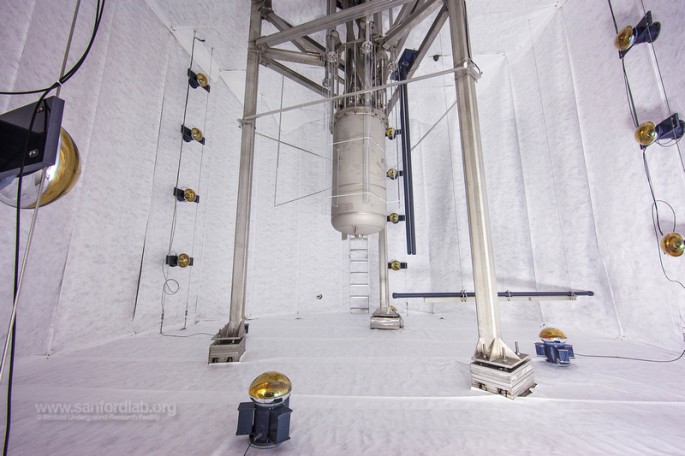Scientists spent a total of more than $9 million with the world's largest dark matter hunting machine which is buried under an abandoned gold mine. However, recent results revealed that they found nothing.
This massive scientific milestone is known as the LUX (Large Underground Xenon) experiment where scientists aim to search for this mysterious, invisible, cosmic material which makes up more than 80 percent the entire mass of the universe. This matter remains elusive to astronomers and physicists, and after LUX ran for a period of 20 months, there are still no clues about the origins of dark matter.
The LUX experiment is located in a very unusual place, underneath Dakota's Black Hills under an old gold mine. Extremely powerful and sensitive sensors are placed inside a water tank filled with 72,00 gallons of the purest water. The experiment would have resulted in tiny flashes of light if dark matter would have collided with xenon atoms in the water.
The experiment finally completed its run for 20 months last May yet the sensors have not detected anything. More specifically, this experiment aimed to detect WIMPS (weakly interacting massive particles) which are the best candidates for dark matter. WIMP theory involves how billions of these ghostly dark matter particles pass through us each second.
Scientists still say the even if the experiment did not yield the desired results, this also does not mean that the experiment was not a success. This suggests that not being able to see these particles reveals the limited extent of the previous model, that can lead to developing and building a larger detector that will be 70 times more sensitive than ever.
According to Cham Ghag of the University College London, in this experiment, we have probed previously unknown regions of parameter space, aiming for the first definitive discovery of dark matter. However, a positive signal would have been welcome. Even if LUX yielded a null result, this is still significant, which can change the landscape of the field, that constrains models for dark matter, which previously could have been anything, Ghag adds.
How do scientists know that dark matter exists? Massive amounts of this energy exist in the universe as its powerful gravitational forces can affect how galaxies rotate and even bend starlight within the known cosmos. However, since dark matter can affect colossal cosmic objects and shape the universe, it cannot be seen with just mere telescopes or current scientific instruments.
According to LUX lead investigator Rick Gaitskell of Brown University, LUX has delivered the best sensitivity search since its first run in 2013. After this 2014 to 2016 search, scientists on the LUX project have pushed the machine's performance to four times better than original project goals.
For the next WIMP hunting experiment that will replace LUX, the LUX-Zeplin will soon operate at the Sanford Underground Research Facility, with a 10 ton liquid xenon detector.



























